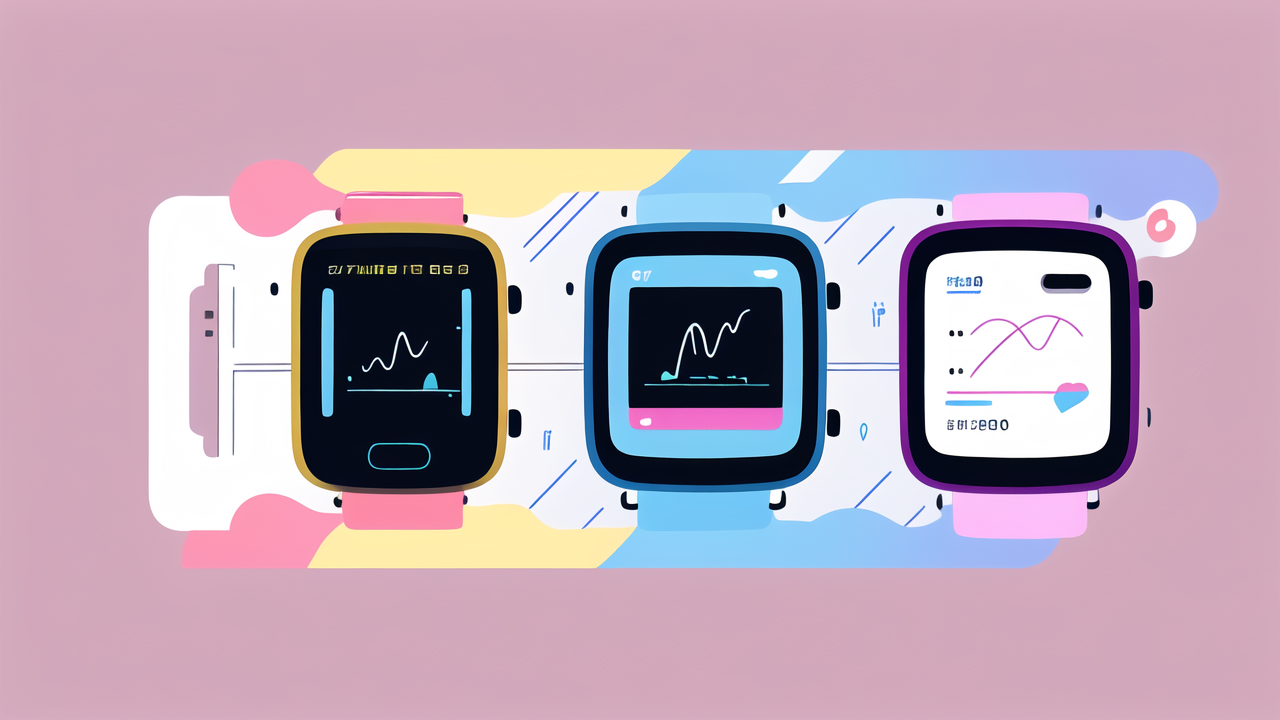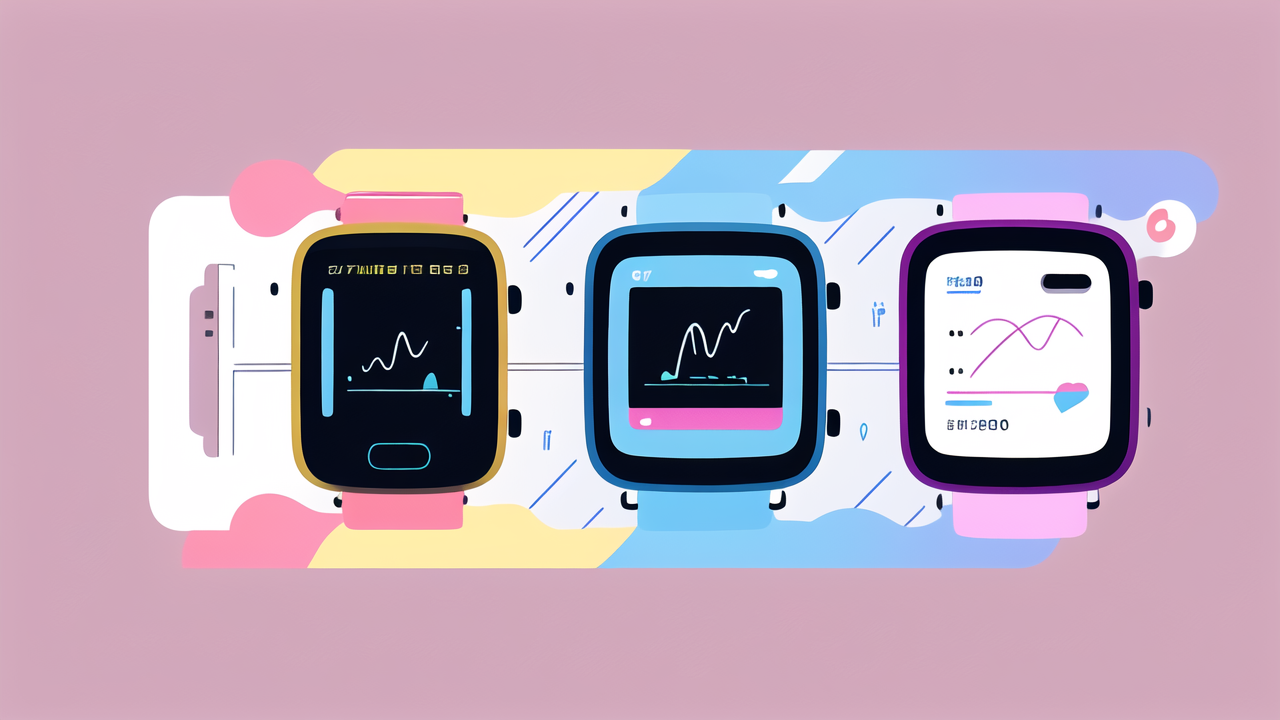The Evolution of Fitness Watches in the United States
Pioneering the Fitness Revolution: A Brief History
Fitness watches have come a long way since their inception. The journey began with simple pedometers in the 1960s. These devices counted steps and little else. As technology advanced, so did fitness trackers. The 1980s saw the rise of heart rate monitors. These were bulky chest straps paired with wrist units. The late 2000s marked a turning point. Brands like Fitbit introduced sleek, wearable devices. These could track steps, calories, and sleep patterns. The 2010s brought smartwatches into the mix. Apple and Samsung entered the market with feature-rich devices. Today's fitness watches are powerful health companions. They offer a range of functions unimaginable just a decade ago.

Technological Advancements Shaping Modern Fitness Watches
Modern fitness watches are marvels of technology. They pack powerful sensors into small packages. GPS tracking allows for accurate distance and pace measurements. Advanced heart rate monitors use optical sensors. These provide continuous heart rate data. Accelerometers and gyroscopes detect movement and orientation. This enables activity recognition and sleep tracking. Many watches now include pulse oximeters. These measure blood oxygen levels, a key health indicator. Some devices even offer ECG capabilities. This can detect irregular heart rhythms. Battery life has improved dramatically. Some watches can now last weeks on a single charge. Water resistance is now standard. This allows for swim tracking and all-weather use. Displays have evolved too. Many now use always-on, high-resolution screens. These are easy to read in any lighting condition.
Regulatory Influences on Wearable Fitness Devices
Regulations play a crucial role in shaping fitness watch development. In the U.S., the FDA oversees these devices. They classify most fitness watches as low-risk wellness devices. This means less stringent oversight than medical devices. However, as watches add more health features, regulations tighten. Watches with ECG functions require FDA clearance. This ensures accuracy and safety for users. Data privacy is another key regulatory concern. Laws like HIPAA protect health data. Companies must ensure user data is secure and private. The FDA has also issued guidance on mobile medical applications. This helps companies navigate the line between wellness and medical devices. As technology advances, regulations will likely evolve. This will ensure consumer safety while fostering innovation.
Key Features of Next-Gen Fitness Watches
Integrating AI and Machine Learning for Personalized Coaching
AI and machine learning are revolutionizing fitness watches. These technologies analyze vast amounts of user data. They create personalized fitness plans and recommendations. AI coaches can adapt workouts based on progress and goals. They consider factors like recovery time, stress levels, and sleep quality. Machine learning algorithms can detect patterns in user behavior. This helps predict things like injury risk or performance plateaus. AI can also provide real-time feedback during workouts. It might suggest form corrections or pace adjustments. Some watches now offer voice-activated AI assistants. These can answer questions and provide motivation during exercise. As AI improves, watches will become even smarter personal trainers. They'll offer increasingly tailored and effective fitness guidance.

Monitoring and Analysis of Vital Signs
Next-gen fitness watches are becoming powerful health monitors. They track a wide range of vital signs. Heart rate variability (HRV) is a key metric. It can indicate stress levels and overall health. Blood oxygen saturation (SpO2) is now common. This can detect sleep apnea and other respiratory issues. Some watches can measure blood pressure. This is a game-changer for hypertension management. Skin temperature sensors can detect early signs of illness. They may even help with fertility tracking. Continuous glucose monitoring is on the horizon. This could revolutionize diabetes management. ECG capabilities are becoming more advanced. They can detect atrial fibrillation and other heart rhythm disorders. These features turn fitness watches into preventive health tools. They can alert users to potential issues before they become serious.
Interconnectivity and Lifestyle Integration: The Future Link
The future of fitness watches lies in seamless integration with our lives. Watches are becoming central hubs for health and lifestyle data. They connect with smart home devices to optimize sleep environments. Integration with food tracking apps provides nutritional insights. Watches sync with gym equipment for more accurate workout tracking. Some can control music, make payments, and even unlock cars. Social features allow users to compete and share achievements. Integration with telehealth platforms enables remote health monitoring. Watches can send alerts to healthcare providers if needed. This interconnectivity creates a holistic view of health and wellness. It allows for more informed decision-making about lifestyle choices. As 5G networks expand, real-time data sharing will become even more powerful. Fitness watches will play a key role in the connected health ecosystem of the future.
The Economic Implications of Fitness Watch Innovation
Market Growth: The Fitness Watch Industry in the U.S.
The fitness watch market in the U.S. is booming. Sales have grown steadily over the past decade. The COVID-19 pandemic accelerated this trend. More people turned to home fitness solutions. This boosted demand for fitness watches. Major players like Apple, Fitbit, and Garmin dominate the market. However, new entrants are constantly emerging. The market is expected to continue growing. Analysts predict a compound annual growth rate of over 15% through 2025. This growth is driven by several factors. Increasing health awareness is a key driver. Technological advancements also fuel consumer interest. The integration of fitness watches with healthcare systems is opening new markets. As prices decrease, these devices become accessible to more consumers. The rise of corporate wellness programs is another growth factor. Many companies now offer fitness watches as employee benefits.

Investment and Research Driving Fitness Watch Development
Investment in fitness watch technology is soaring. Major tech companies are pouring billions into R&D. They're developing new sensors, algorithms, and features. Startups are also attracting significant venture capital. They're exploring niche markets and innovative technologies. Universities are partnering with companies for research. This accelerates the development of new health monitoring capabilities. Investment in battery technology is a major focus. Companies aim to extend battery life while adding features. AI and machine learning are other key investment areas. These technologies promise to make watches smarter and more personalized. Miniaturization is another important research area. This allows for more sensors in smaller, more comfortable devices. As investment continues, we can expect rapid advancements in fitness watch capabilities.
The Ripple Effect: How Innovation in Fitness Watches Affects Healthcare and Wellness Industries
Fitness watch innovation is reshaping healthcare and wellness industries. These devices are becoming key tools in preventive healthcare. They provide continuous health data to users and doctors. This can lead to earlier detection of health issues. It may reduce healthcare costs in the long run. The fitness industry is adapting to incorporate wearable tech. Many gyms now offer device integration with their equipment. Personal trainers use client data from watches to optimize workouts. The wellness industry is also embracing fitness watch data. Meditation apps sync with watches to track stress levels. Nutritionists use activity data to create personalized meal plans. Insurance companies are starting to offer incentives for watch usage. This could lead to more personalized insurance premiums based on lifestyle data. As fitness watches evolve, their impact on these industries will only grow. They're driving a shift towards more personalized, data-driven health and wellness approaches.




Leave a comment
This site is protected by hCaptcha and the hCaptcha Privacy Policy and Terms of Service apply.